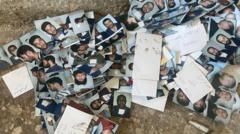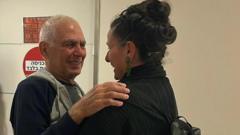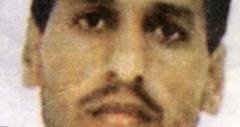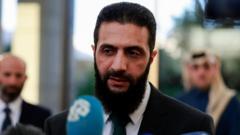In the wake of Bashar al-Assad's regime retreating, desperate families like Khaled al Hamad's are unearthing human remains, seeking closure for those who disappeared in Syria's notorious prisons. The search sheds light on the dark history of torture and abuse under the regime, as survivors and families confront the painful remnants of their past.
Unearthing the Past: Families Seek Closure in Syria's Graves

Unearthing the Past: Families Seek Closure in Syria's Graves
As the Assad regime's grip loosens, families are uncovering the remains of their loved ones in search of answers and justice.
In an eerie corner of Adra, a cemetery that served as a clandestine resting place emerges as a space of sorrow and hope—a testament to the long-lasting impacts of the Assad regime. As Khaled al Hamad fought to dig up bags containing human remains, the tragic reality unfurled: each bag, marked with names and prison numbers, held the potential identity of his two missing brothers, Jihad and Hussein, last seen a decade ago.
The grounds, once strictly monitored by state forces, have transformed into sites of revelation since Assad's retreat, with skeletal remains surfacing as families seek solace for their vanished kin. “Some were taken to a place called ‘the driving school’,” Khaled recounted grimly, fearing the worst for his missing brothers. He is not alone; tens of thousands of families, clouded by grief and desperation, are now persevering to uncover truths hidden behind prison walls.
The Mazzeh military airbase in Damascus stands as a chilling monument to state terror, remnants of its brutal efficiency scattered like fallen leaves after a storm. Reports indicate that prisoners were subjected to horrifying torture techniques, including electroshock, reflecting the inhumane conduct that has marred the nation’s history. Survivors narrate heart-wrenching accounts of atrocities and violations, further fueling the collective anguish of the nation.
Among the many searching for their loved ones is a mother who clings to hope, sifting through photographs of other victims in a makeshift archive. “He was registered at the airbase prison... we came but couldn’t find him,” she wept, her grief a shared sentiment echoed by countless others. Families' desperation tangles with bureaucratic negligence, as they struggle to decode a system seemingly designed to obscure individual stories amid a tapestry of terror.
As evidence continues to elude them, families fear the slow loss of critical information, which could arise from negligence both locally and internationally. The ramifications of the regime’s actions have broader implications, entwined with geopolitical narratives shaping the involvement of foreign powers in Syria.
Outside the walls of the haunted airbase, the remains of aircraft litter the ground—silent witnesses of a tumultuous conflict that remains unresolved. The fall of Assad is not merely a political shift; it symbolizes a reckoning for the past, as Syrians push for self-determination against a backdrop of international interests.
With hope flickering on the horizon, families continue their relentless pursuit for closure, racing against time to illuminate the darkness left by the Assad regime and to carve a path toward justice.





















